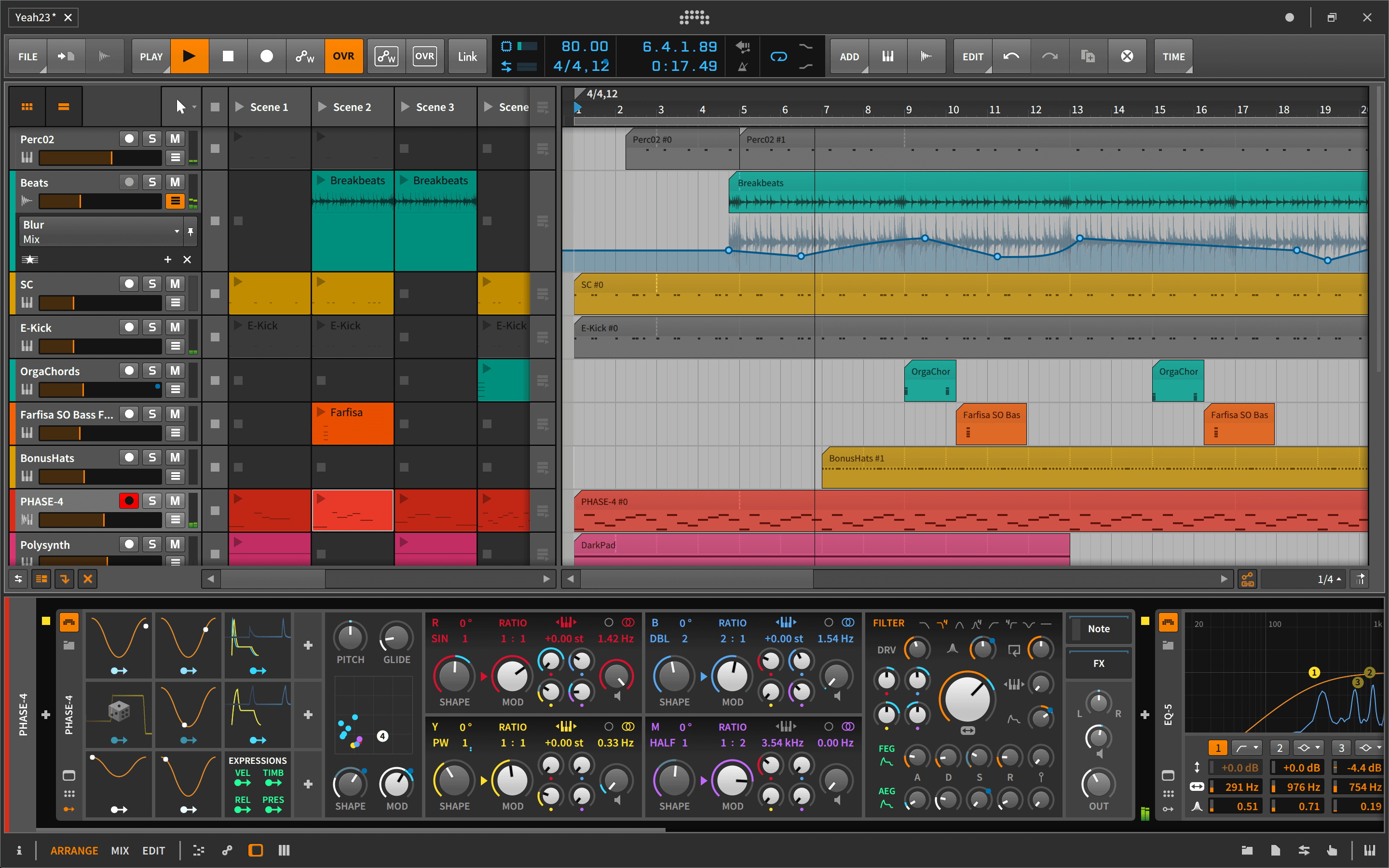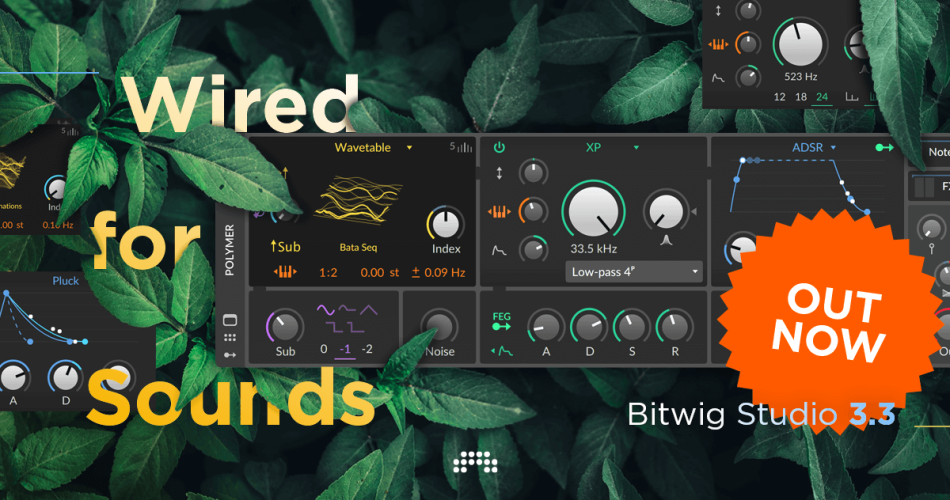

There's no nesting or grouping of modules, but the editing grid appears to be unbounded in all directions, so there's no hard limit on the complexity of device you can build, and the view can be zoomed to help with navigation. Some modules, such as the step sequencers, are resizeable. The simplest modules occupy one grid square and are reminiscent of Scrabble tiles, while more complex modules occupy larger rectangular areas.
#BITWIG STUDIO 3 PATCH#
Modular devices are constructed from a selection of approximately 150 modules, laid out strictly on a fixed grid and wired up with virtual patch cords.
#BITWIG STUDIO 3 FULL#
The Grid in full, with miniature overview and full editing pane.

It's not a separate file as in Max for Live, unless you choose to export it to your library, and there's no notion of preset switching for a device: the entire device, modules and all, is the preset.

The entire configuration of any modular device is saved with the Bitwig project, just like any other device. These are the starting points: you can build on what's there, or remove everything and start from scratch. What you see in this panel depends on the type of Grid device you select: for the Poly Grid the default is the world's simplest synthesizer made from an oscillator and an envelope, while for the FX Grid it's just a through connection from input to output. (The expanded view panel can also be popped out into its own dedicated window.) With the arrival of The Grid in Studio 3, Bitwig have knocked the ball out of the park. This grid can be thought of as a 'satellite view' of modular components: click the appropriate icon for an expanded view, or click in the grid area itself, and the device pops up, full sized and fully detailed, into the main panel area. In place of the usual panel of controls there's a miniature grid of squares, some of them filled with coloured blocks. These are first-class devices, with remote-control macro knobs, modulator slots, and even dedicated nested chains for other effects. (There's no facility in The Grid for direct MIDI processing, and hence no equivalent of the Max for Live MIDI Device.) Select one of the two Grid device types, drop it into a track, and you're away. Like Max for Live, Bitwig's modular environment is revealed through a small selection of dedicated device types: Poly Grid is a polyphonic instrument that responds to MIDI and outputs stereo audio, while FX Grid is a stereo-in, stereo-out audio processor. Roughly speaking, Studio 3's Grid falls somewhere between the integrated environment of Reason and the editable-devices approach of Ableton's Max for Live.
#BITWIG STUDIO 3 SOFTWARE#
These days modularity is a major feature of products ranging from Cycling '74's Max and Native Instruments' Reaktor to Propellerhead's Reason, as well as a fair number of software modular plug-ins. On-screen modular environments aren't new: they go back at least a couple of decades to products like the Nord Modular. With Studio 3 we're finally being shown the complete picture, with fully modular instruments and effects as first-class citizens, and it's called The Grid. Bitwig Studio 2 made some first steps in the modular direction, allowing any instrument or effect to be enhanced with its own collection of modulator objects: LFOs, step sequencers, vector mixers, envelope followers and so on. Innovative music creation platform Bitwig takes a big leap forward with the introduction of an open-ended modular environment.Įver since Bitwig Studio launched some five years ago, the company have been talking about a "modular audio system" underlying the whole design, and how one day that might get exposed to the user community at large.


 0 kommentar(er)
0 kommentar(er)
